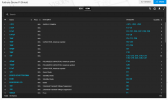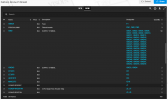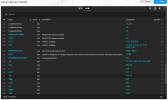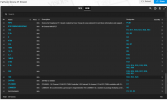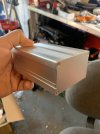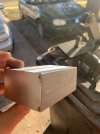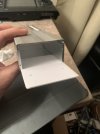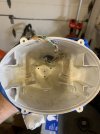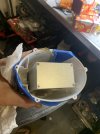THANKYOUTHANKYOUTHANKYOU!!!! Just hit post and it told me to go back and refresh first. Thanks DoomMeister! I will take a look tomorrow! And I suspect they might help with this...
Humm.... Well I have made good progress, but hit a small snag.
Progress: I got the new raspberry pi loaded with the ArduSub card, and have the camera working. Or at least I can see the camera is connected when I enter the wen interface. I can muck around in there. Took a WHILE to get the network settings right to get there, and some fiddling to get the camera showing up.
Snag: I am not getting video into the ArduSub QGroundControl software. Iy shows disconnected for some reason. I suspect it has to see the Pixhawk talking to the Pi to become "connected." The Pixhawk is coming from Shenzen with a delivery estimate of Feb 19th... I think I have 2 of the autopilots on the unverified list.
So it seems that I have no interface for web control avalible in ArduSub. But moving on from this, it suddenly got interesting!
SUPER WEIRD and VERY INTERESTING!!!!: So I plugged in the Fathom Shield and rebooted. Suddenly, the QGroundControl software came to life. I was getting a "Conflict error unable to initialize device driver" hollered out repetitively over my MacBook speakers. Not sure what this means yet, but it defiantly recognized that I had the shield plugged in. If there was a way to get that working instead of the Pixhawk, that would be epic!
That is enough progress for tonight, starting to see double lol time for bed.
Humm.... Well I have made good progress, but hit a small snag.
Progress: I got the new raspberry pi loaded with the ArduSub card, and have the camera working. Or at least I can see the camera is connected when I enter the wen interface. I can muck around in there. Took a WHILE to get the network settings right to get there, and some fiddling to get the camera showing up.
Snag: I am not getting video into the ArduSub QGroundControl software. Iy shows disconnected for some reason. I suspect it has to see the Pixhawk talking to the Pi to become "connected." The Pixhawk is coming from Shenzen with a delivery estimate of Feb 19th... I think I have 2 of the autopilots on the unverified list.
So it seems that I have no interface for web control avalible in ArduSub. But moving on from this, it suddenly got interesting!
SUPER WEIRD and VERY INTERESTING!!!!: So I plugged in the Fathom Shield and rebooted. Suddenly, the QGroundControl software came to life. I was getting a "Conflict error unable to initialize device driver" hollered out repetitively over my MacBook speakers. Not sure what this means yet, but it defiantly recognized that I had the shield plugged in. If there was a way to get that working instead of the Pixhawk, that would be epic!
That is enough progress for tonight, starting to see double lol time for bed.



